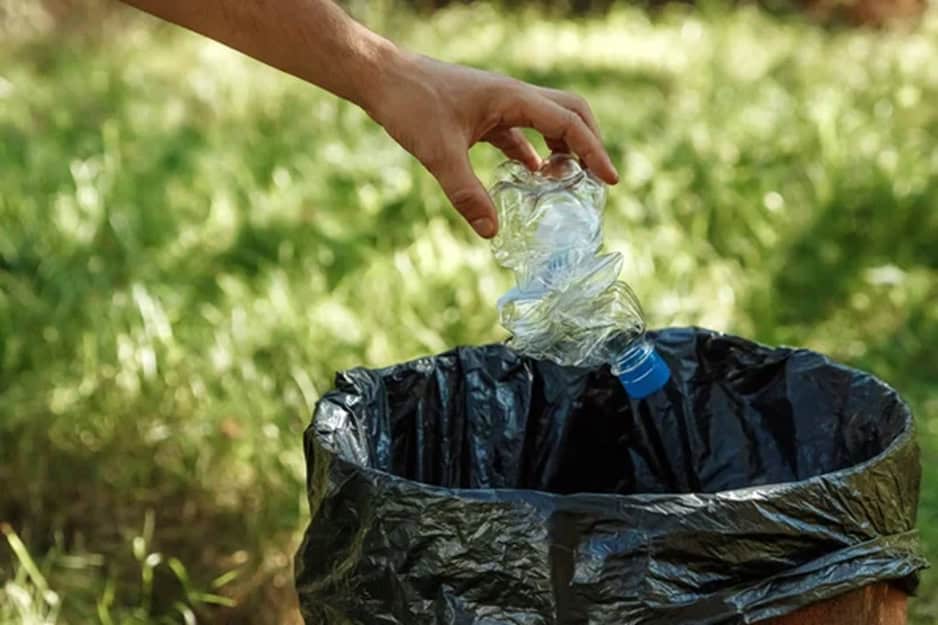
A quarterly newsletter on Plastics, Logistics, and Flame Retardants
🪝Antimony Aggravation
🪝Plastics Industry Under Attack
🪝Freight Updates
🪝Flame Retardants Series Part I: A Brief History of Bromine
China on Sept 15 will impose restrictions on the export of Antimony ore, metal, and Antimony Oxide, adding to a list of restrictions on rare earth metals that includes gallium and germanium, elements used in micro chips, solar cells, and high tech equipment [1]. China produces 48% of the world’s mined Antimony, and antimony metal is used in ammunition, missiles, and military equipment. The Commerce Ministry states these restrictions are not aimed at any one country, and that the restrictions are “in order to safeguard national security and interests, and fulfill international obligations such as non-proliferation.”
One form of antimony that interests us is Antimony Trioxide (ATO). used as a synergist with Halogenated flame retardants (FR). Antimony trioxide doesn’t have flame retardant properties on its own, but when it reacts with halogenated compounds, it creates chemical compounds that do. This reaction occurs when antimony trioxide reacts with halogenated acids generated by the flame retardant to form antimony oxyhalides, free radicals. Antimony trioxide can enhance the activity of halogenated flame retardants, so less of the halogenated compound is needed to achieve the same level of flame retardancy. ATO is used in a variety of plastics and end products.
We asked our colleagues in China about these restrictions and their impact on the market. They point out that ATO for FRs is of grades 99.5%-99.9%, and the military grade is 99.99%, yet the impact on Antimony ore, the raw material, will increase market price of ATO.
Additionally the supply of Russian antimony ore imported to China for refinement is slowing as 98% of Chinese banks are now unwilling to accept payment from Russia [2]. This slowing is due to the sanctions imposed since the conflicts began in 2022. While there are work-arounds to the banks, this tightening of the supply of antimony adds to the market pressures, and subsequently causes the price of ATO to increase further.
So then the supply and export of ATO for FR to the broader market will continue, and the pressures on raw Antimony ore will cause the price to increase. 2024 has seen a rise in the price of ATO, prior to these restrictions.
Over the first three quarters of 2024 ATO price increased 98.76% in the NA market. Our colleagues in China speculate that through 2024 the prices will continue to increase, though note that the increase will not be as drastic as the beginning of 2024. One reason for this may be that the miners and suppliers of ATO in China knew of these impending restrictions, and are in-front of the curve. The increase and subsequent market clamor highlights the US reliance on imported Antimony, which is unlikely to change quickly. We will keep our eyes open for the future of Antimony and ATO. Good news for FR is there are alternatives to ATO for flame retardants and synergists.

[1] Reuters. China Curbs Exports Strategic Minerals. 2024-08-15.
https://www.reuters.com/markets/commodities/chinas-curbs-exports-strategic-minerals-2024-08-15
[2] BusinessInsider. Nearly all Chinese banks are refusing to process payments from Russia, report says. 2024-08-14.
White House on Limiting Virgin Plastics Production
In July 2024 the Whitehouse released the report MOBILIZING FEDERAL ACTION ON PLASTIC POLLUTION: PROGRESS, PRINCIPLES, AND PRIORITIES [1]. The report highlights activities to reduce plastic waste, by eliminating single-use plastic from federal operations, citing that plastic waste has doubled in the past two decades. We are familiar with the tragic photos and scenes of plastic piled in mounds on the beaches, and in our oceans. The report highlights a growing focus on single-use plastics and the plastics industry in the global responsibility for climate change.
In an effort to address the growing climate change, the United Nations Environmental Assembly (UNAE) began a resolution [2] that seeks to be legally binding to signatories, to manage the full lifecycle of plastics, from design, production, to disposal. On Wednesday, August 14, the US White house officials came out in support of additions to the UN Plastics treaty calling for yearly limitations on virgin plastics production [3]. This is seen as a position reversal. Environmental groups supporting the position, and plastics and manufacturing groups denouncing the move, came out shouting hyperbole and concern for the future. The move by the White House comes three months before the treaty is to be finalized on November 25th in Busan, South Korea. Notably this is after the US presidential election on November 7th. Given the late hour, what does this move signify? A symbol “that raises ambitions” as the white house put it. There is a vocal minority in support of the addition, with China and Saudi Arabia supporting the treaty without the addition. Even if the addition makes it into the treaty, and the US signs on, and the senate agrees, the US is capable of pulling out of the treaty or ignoring it. This token gesture is not the attack on the plastics industry.
The focus on single use plastic comes as plastic manufacturing is a locus for fossil fuel use, from production, transportation, and raw materials that are and use fossil fuels. So when a product of plastic that is designed to be recycled is instead thrown away to landfills, adding to our pollution rather than reducing pollution, we see the problem with single-use plastic.
The question is, what do we do to increase recycling? November 15 is America Recycles Day, a day to recognize the importance and impact of recycling, which has contributed to American prosperity and the protection of our environment. The US Recycling rate is 32% [4]. While a majority of pollution comes from other nations, and industries, and we by all means need to push to have those polluters reduce their emissions, we as individuals have the ability to make an impact here and now by recycling more. The EU recycle rate is 48.6% [5]. The plastics industry is under attack from all of us when we throw recyclable plastics into the trash. We need to recycle those plastic bottles, and containers, promote the circular economy, and drive progress.

[1] US White House. MOBILIZING FEDERAL ACTION ON PLASTIC POLLUTION: PROGRESS, PRINCIPLES, AND PRIORITIES. 2024-07.
[2] UNEP. Resolution 5/14 “End plastic pollution: Towards an international legally binding instrument” . 2022-05-10.
wedocs.unep.org/bitstream/handle/20.500.11822/39812/OEWG_PP_1_INF_1_UNEA%20resolution.pdf
[3] Reuters. In shift, US backs global target to reduce plastic production, source says. 2024-08-14.
[4] EPA. America Recycles Day. 2023-11-15.
https://www.epa.gov/circulareconomy/america-recycles-day
[5] EEA. Waste and Recycling. 2024-02-22.
Navigating the Tides of Change – The Future of Logistics in 2024 and Beyond
In the ever-evolving world of logistics, staying ahead of the curve is not just an advantage—it’s a necessity. As we look towards 2024 and early 2025, the transportation industry is poised for significant shifts that will reshape how we move goods across the country. Let’s dive into the forecast and explore what it means for businesses nationwide.
C.H. Robinson’s latest forecast paints an intriguing picture for the coming year. Dry van linehaul costs are expected to take a 5% dip year-over-year in 2024, while refrigerated transport sees a more modest 3% decrease. But don’t be fooled by these numbers—the journey ahead is far from smooth.
As we bid farewell to the traditional produce season surge, we’re witnessing a fascinating shift in capacity tension from the sun-soaked South to the cooler North. This geographic dance of supply and demand will likely spark a reimagining of routing strategies, potentially breathing new life into regional economies along the way.
In the near term, expect a lull in demand and a slight reprieve in costs. But as we roll into the fourth quarter, brace for the familiar holiday rush and year-end scramble, coupled with a touch of carrier attrition that will tighten the market.
The dawn of 2025 will bring a post-holiday cooldown, but don’t expect prices to plummet to their previous lows. As spring turns to summer, keep your eyes on the horizon—the annual produce season will usher in another wave of cost increases.
So, what does this mean for your business? It’s time to get creative and adaptable:
As we sail into this new era of logistics, one thing is clear: the ability to adapt quickly and intelligently will separate the industry leaders from the pack. By staying informed and nimble, your business can turn these market shifts into opportunities for growth and innovation.
Remember, in the world of logistics, change is the only constant. Are you ready to ride the wave?
CH Robinson

Bromine’s versatile journey began with two independent discoveries by chemists Antoine Balard and Carl Jacob Lowig in the mid-1820s. While studying salt water after distillation, a dark red liquid remained, bromine. Their work unlocking bromine’s elemental properties paved the way for its widespread adoption across industries over the next 200 years.
Within just a decade of its discovery, by 1835, bromine compounds were already being utilized for medical purposes – an early hint at their future importance in pharmaceuticals, drug development, and disease treatments. In the First World War Bromine as xyxyl bromine was used as poison gas. In the 1930s bromine was used for water purification and disinfection.
Bromine’s commercialization took off in the 1950s with fire safety applications. The 1960s brought brominated rubber that made tubeless tire inner linings possible. More recently, bromine has reduced mercury emissions from coal plants since 2000. Recently, a 2014 study notably found bromine is one of just 28 elements essential for tissue development in humans and animals.
From its initial discovery nearly 200 years ago, bromine has followed an intriguing trajectory, with its versatile applications expanding across vital industries like medicine, water treatment, tires, and emission reduction, and its significance continues to grow to this day. Currently bromine’s role in flame retardants is crucial, and the largest use of bromine today is fire safety.

BSEF – International Bromine Council
https://www.bsef.com/about-bromine/what-is-bromine/history/
Thanks for reading! If you found this insightful please share this with your colleagues.
Find us on LinkedIn!